Ibex are a large species of wild goat. Their Hebrew and Arabic names both mean “to ascend.” Dependent on water, the group travels together to a water hole. One member of the group will keep watch and whistle if danger approaches, telling the herd to race to the cliffs. The cliffs are their safety because of their strong agile legs and grooved hooves, allowing them to climb on the rocks in difficult areas. Psalm 104:18 (KJV) “The high hills are a refuge for the wild goats; and the rocks for the conies.”
Southern Wildlife
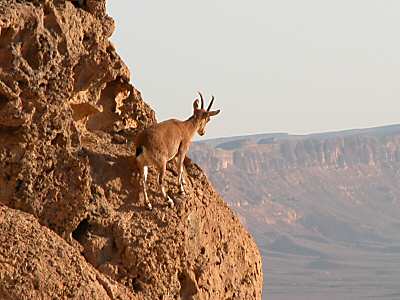
Ibex
Camels
Camels can survive amazingly well in the high Negev temperatures. They have thick coats which protect them from the desert heat, long eyelashes which shade them from the sun, a split upper lip which permits them to eat thorny plants, and they can close their nostrils during sandstorms. Most importantly, they can go without water for prolonged periods of time — at least a week — because they reprocess urea, a chemical normally lost in urine, while keeping a constant amount of water in their blood plasma.
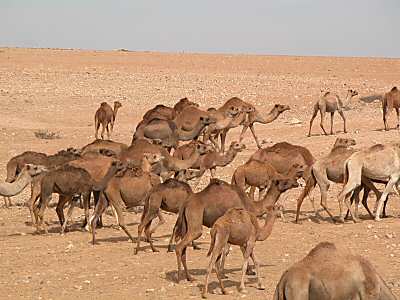
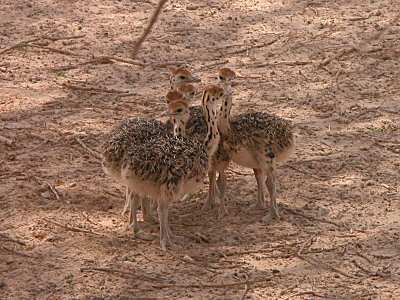
Ostriches
Job 39:13-18 (NIV) “The wings of the ostrich flap joyfully, but they cannot compare with the pinions and feathers of the stork. She lays her eggs on the ground and lets them warm in the sand, unmindful that a foot may crush them, that some wild animal may trample them. She treats her young harshly, as if they were not hers; she cares not that her labor was in vain, for God did not endow her with wisdom or give her a share of good sense. Yet when she spreads her feathers to run, she laughs at horse and rider.”
Jackals
Jackals are frequently referenced in judgment passages in Scripture as a wild animal that inhabits a place abandoned by man.
Isaiah 34:13 (NIV) “Thorns will overrun her citadels, nettles and brambles her strongholds. She will become a haunt for jackals, a home for owls.”
Job 30:29 (NIV) “I have become a brother of jackals, a companion of owls.”
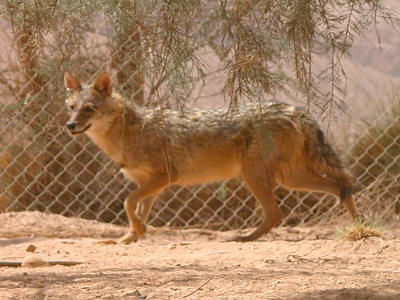
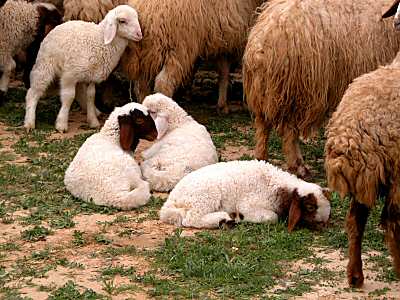
Sheep
For centuries sheep have been an important part of life in Israel, providing the local inhabitants with wool, milk, and meat. They were a key part of sacrificial offerings at the temple and tabernacle, and were frequently compared to men in the Bible, to illustrate their dependency and helplessness.
Shepherd
“Sheep” and “flocks” are mentioned hundreds of times in the Bible, using twelve different Hebrew words and four Greek words. They are the most prominent animal mentioned in Scripture.
Luke 15:4 (KJV) “What man of you, having an hundred sheep, if he lose one of them, doth not leave the ninety and nine in the wilderness, and go after that which is lost, until he find it?”
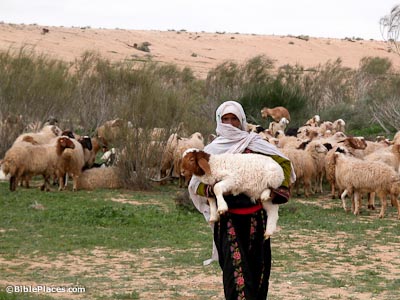

Download all of our Cultural Images photos!
$34.00 $49.99 FREE SHIPPING
Related Websites
For more information and resources on the wildlife of Israel (not just those native to the south), see our Animals of the Bible page.
Hai-Bar Yotvata Nature Reserve. A description of the Hai-Bar Nature Reserve with visiting information and articles about their programs and the animals involved. A shorter summary, with pictures of some of the animals, can be found here, and a discussion of some of their conservation efforts (also with pictures) can be found here.
Animals of Masada. Masada is an icon of southern Israel, and this page offers a brief look at some of the species that call this area home.
Birdwatching Locations in Southern Israel (Leiah Elbaum) An account of birds in various regions of the south, with pictures.